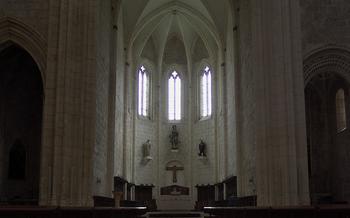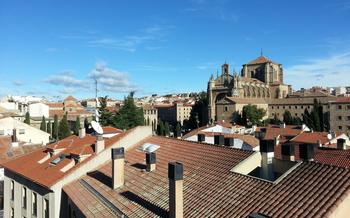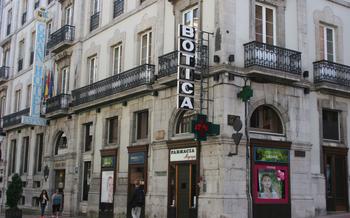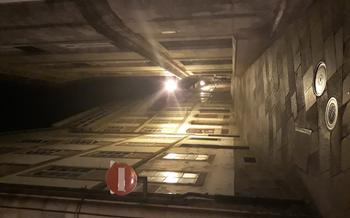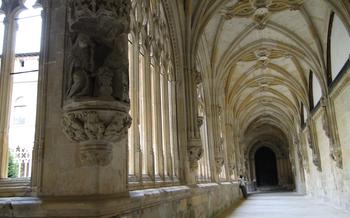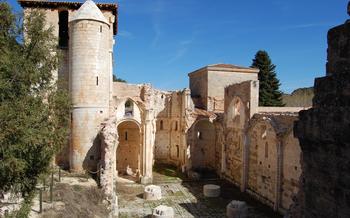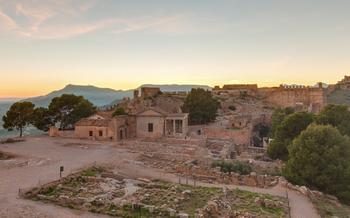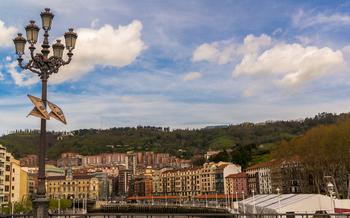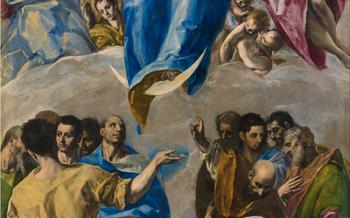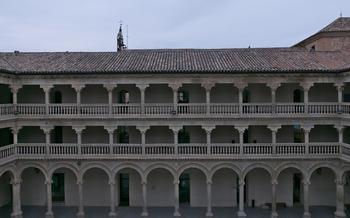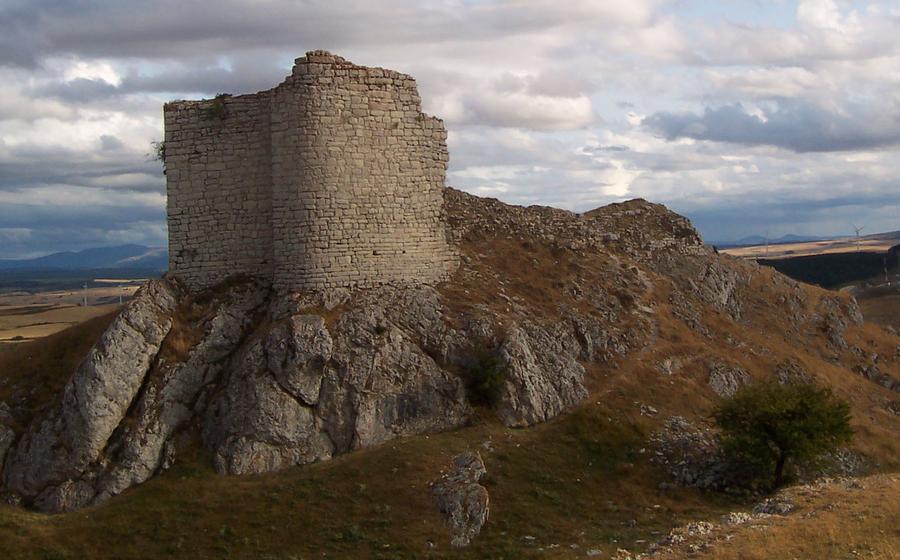
Monasterio de Rodilla
- Historical Significance
- Architectural Beauty
- Tranquil Atmosphere
- Church of Santa Maria
- The Bell Tower
- The Chapter House
- The Scriptorium
- The Refectory: A Glimpse into Communal Monastic Life
- The Dormitory
- The Infirmary
- The Garden
- Insider Tip
Historical Significance
The Monasterio de Rodilla, a testament architecture and monastic life. Founded in the 12th century, this former Benedictine monastery played a pivotal role in the region's religious and cultural landscape. Its Romanesque origins are evident in its distinctive architectural features, showcasing the skill and artistry of medieval builders. Once a powerful and influential monastery, Rodilla's legacy continues to captivate visitors, inviting them to delve into the depths of its historical significance.
Architectural Beauty
The Monasterio de Rodilla is an architectural masterpiece that seamlessly blends Romanesque and Gothic elements. As you approach the monastery, you'll be captivated by the intricate stone carvings and sculptures adorning its exterior. The main entrance features a stunning Romanesque portal, showcasing the skill and artistry of the medieval craftsmen.
Once inside, you'll be greeted by a breathtaking cloister, the heart of the monastery. The delicate arches and columns that surround the courtyard create a sense of serenity and tranquility. Admire the intricate carvings and sculptures that adorn the columns, each telling a unique story from the monastery's rich history.
The bell tower, a prominent feature of the monastery's skyline, offers breathtaking panoramic views of the surrounding countryside. Climb the tower's narrow staircase to reach the top and be rewarded with stunning vistas that stretch for miles. Take a moment to savor the fresh air and enjoy the tranquility of the surroundings.
The church of Santa Maria, the main church within the monastery complex, is a testament to the monastery's spiritual significance. The beautiful Romanesque portal leads you into a sacred space adorned with stunning frescoes and paintings. The church exudes a spiritual ambiance that invites you to pause and reflect on the profound history of this holy place.
Tranquil Atmosphere
Escape the hustle and bustle of city life and step into the serene embrace of the Monasterio de Rodilla. Surrounded by rolling hills and lush greenery, this ancient monastery offers a sanctuary of peace and tranquility. Let the stress of modern life melt away as you wander through the tranquil grounds, listening to the sound of silence and immersing yourself in nature's beauty. Find a quiet corner in the cloister to meditate or simply sit in silent contemplation, allowing the peaceful atmosphere to wash over you. Reconnect with your inner self and discover the serenity that lies within.
Church of Santa Maria
Within the walls of the Monasterio de Rodilla, the Church of Santa Maria stands as a testament to Romanesque architectural splendor. Its imposing facade is adorned with a magnificent portal, featuring intricate carvings that depict biblical scenes and symbolic motifs. Step inside to marvel at the stunning frescoes and paintings that grace the interior walls, narrating tales from the lives of saints and illustrating key moments from the Bible. The church's spiritual ambiance invites contemplation and reflection, allowing visitors to connect with the deep faith and devotion that permeated the lives of the Benedictine monks who once resided here.
The Bell Tower
Majestically dominating the monastery skyline, the bell tower of the Monasterio de Rodilla stands as a testament to the architectural prowess of the Benedictine monks. Ascend the spiral staircase, and you'll be rewarded with breathtaking panoramic vistas that stretch far beyond the monastery walls. From this elevated vantage point, you can feast your eyes upon the verdant countryside, dotted with villages and fields, and bask in the fresh, invigorating air. Let the stunning panoramas wash away your worries and immerse yourself in the tranquility of the moment.
The Chapter House
The Chapter House, an integral part of the Monasterio de Rodilla, served as a crucial meeting room for the monks. This impressive space exudes an aura of solemnity, characterized by its intricate rib vaulting that elegantly supports the ceiling. Light streams through the exquisite stained glass windows, casting a warm glow upon the room's interior. Intricate carvings and sculptures adorn the walls, showcasing the meticulous craftsmanship and artistry that went into its construction.
The Chapter House was a place of great significance, where the monks gathered to make important decisions that governed the monastery's daily life and operations. It was here that they discussed matters of discipline, governance, and spiritual guidance. The room's serene ambiance and sacred atmosphere facilitated deep contemplation and reflection, helping the monks reach consensus and make decisions in accordance with their religious beliefs and values.
The Scriptorium
Within the walls of the Monasterio de Rodilla lies a room that once housed the secrets of medieval knowledge—the scriptorium. Here, in the flickering light of oil lamps, monks painstakingly copied and illuminated manuscripts, creating masterpieces that would stand the test of time.
The scriptorium was more than just a room; it was a hub of intellectual activity, where the written word was revered and preserved. The monks, with their meticulous attention to detail, transformed parchment into works of art, adding intricate illustrations and vibrant colors that brought the texts to life.
The art of bookmaking in the scriptorium was a labor of love, requiring immense patience and skill. The monks, using quills and natural inks, carefully transcribed texts, often religious or philosophical in nature. They adorned the pages with elaborate borders, illuminated initials, and miniature paintings, creating visual masterpieces that complemented the written word.
As you step into the scriptorium, you can almost feel the presence of those dedicated scribes, their hands moving swiftly over the parchment, their minds focused on preserving and transmitting knowledge for generations to come. The air is filled with the whisper of history, the stories of those who dedicated their lives to the written word.
The scriptorium stands as a testament to the enduring power of knowledge, the dedication of the monks who preserved it, and the beauty that can be found in the simplest of things. It is a place where the past and present intertwine, where the written word comes alive, and where the spirit of learning and creativity continues to thrive.
The Refectory: A Glimpse into Communal Monastic Life
The refectory, or dining hall, is a significant space within the Monasterio de Rodilla. This simple yet elegant room, characterized by its long table and rows of benches, served as the communal dining area for the monks. Imagine the daily meals shared in this space, where the monks gathered to nourish their bodies and spirits.
As you step into the refectory, the atmosphere of monastic life becomes palpable. The simplicity of the room reflects the Benedictine values of humility and moderation. The long table, reminiscent of a family dinner table, symbolizes the sense of community and brotherhood among the monks.
Envision the monks congregating here, breaking bread together in silence, their minds focused on contemplation and gratitude. The refectory was not merely a place for sustenance; it was a sacred space where the monks came together to strengthen their spiritual bonds and share in the communal experience of monastic life.
Take a moment to reflect on the daily routines of the monks as they gathered in this room. Imagine the conversations that may have taken place, the laughter and camaraderie, and the moments of quiet reflection. The refectory stands as a testament to the importance of community and shared experiences within the monastery walls.
The Dormitory
The dormitory, where the monks slept, is a testament to the simplicity and austerity of monastic life. Rows of simple beds, each with a thin mattress and a blanket, line the walls of this large, sparsely furnished room. The only other furnishings are a few wooden chests and a crucifix.
Imagine the monks retiring to their beds after a long day of prayer, work, and study. The room would have been dimly lit by a few candles, and the only sounds would have been the monks' soft breathing and the occasional creak of the wooden floorboards.
Reflect on the daily life and routines of the monks. How did they manage to sleep in such close quarters? What were their thoughts and feelings as they lay in bed, preparing for another day of devotion and service?
Even in its simplicity, the dormitory offers a glimpse into the lives of the monks who called this monastery home. It is a reminder of their commitment to a life of humility and devotion, and of the power of community and shared purpose.
The Infirmary
Within the monastery walls, a sanctuary for healing and care awaited those in need. The infirmary, a refuge for the sick or injured monks, offered solace, comfort, and medical attention. Step into this room, and you'll be transported back to a time when herbal remedies and traditional healing methods were the foundation of monastic medicine.
Discover the practices and techniques employed by the monks to tend to their ailing brethren. Learn about the role of herbalism, where plants and flowers held both medicinal and spiritual significance. See the tools and instruments they used to diagnose and treat various ailments, relying on their knowledge and wisdom passed down through generations.
Reflect on the importance of community and care within the monastery. The infirmary was a reminder that even in times of illness or injury, the monks found strength and support in their shared bonds. It was a place where compassion and empathy prevailed, fostering a sense of unity and interdependence among the monastic brethren.
The Garden
Within the tranquil confines of the monastery, visitors can find solace and serenity in the beautifully manicured garden. A haven of peace, the garden features a diverse array of plants, flowers, and trees, each contributing to its vibrant and colorful tapestry. Visitors can wander through the garden's winding paths, admiring the delicate blooms of roses, the vibrant hues of lavender, and the stately presence of towering cypress trees.
The garden served as a vital space for the monks, who tended to it with great care and precision. They cultivated herbs for medicinal purposes, grew vegetables for sustenance, and found solace and inspiration in the beauty of nature. Today, visitors can follow in the footsteps of the monks, experiencing the tranquility of the garden and connecting with the natural world that surrounds the monastery.
Insider Tip
To make the most of your visit to the Monasterio de Rodilla, consider planning your trip during the summer months when the monastery's beautiful gardens are in full bloom, adding a vibrant splash of color to the surroundings. Take advantage of the guided tours offered to gain insights into the rich history, captivating architecture, and profound significance of this sacred site. Embrace the tranquility and serenity that permeate the monastery grounds, far removed from the hustle and bustle of everyday life. Pack a picnic lunch and savor the flavors of your meal amidst the beauty of nature, creating a memorable experience that will linger in your heart.
